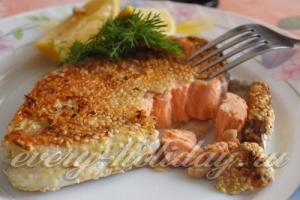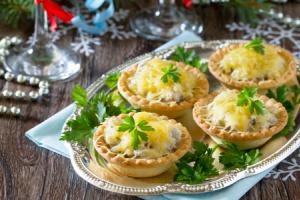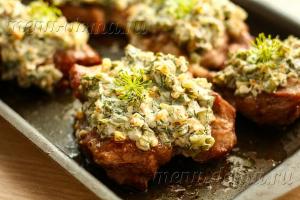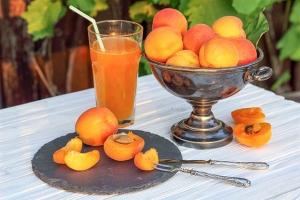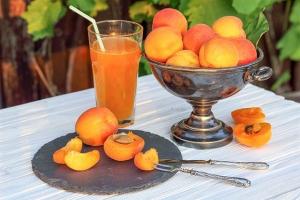In the manufacture of any modern wine, wine yeast is necessarily used. They go through the following stages in their development:
- Lag stage. It begins from the moment when the yeast grains enter the wort - into the nutrient medium. Cells begin to adapt to the substrate. They increase in size, but at the same time there is no reproduction process yet;
- The second stage is called logarithmic. During it, the cell population increases, and the biomass becomes larger. Cells endure all negative environmental factors. Alcohol fermentation begins;
- The third stage is called stationary. Yeast cells stop growing, and alcoholic fermentation occurs with intense force;
- The fourth stage is the attenuation of the growth of yeast mass cells. The mass begins to decrease in size due to intensive autolysis and the use of reserve substances by yeast.
Having passed all four stages, the yeast mass will make any wine tasty and aromatic.
All about wine yeast
In nature, yeast forms on the surface of berries, such as grapes. They can be easily seen, as they have a light coating on the peel of the berries. Plaque is formed due to the work of a yeast fungus.
Baking, alcohol, beer and wine yeast grains are classified as industrial yeast. Given the place of origin, the grape variety and the location of the vineyards, each type of yeast is assigned its own name. Yeast races, in turn, can be divided into groups. As a result, the races of wine yeast are:
- High fermentation;
- Heat-resistant or cold-resistant;
- Alcohol resistant;
- Sherry.
Alcohol-resistant yeast races are used to make champagne, and sherry to give wines a unique aroma and taste.
Wine is usually made from the juice of grapes or other types of fruits and berries.
If artisanal winemaking takes place, the must (squeezed juice) begins to ferment without the help of yeast, as yeast fungi that are present on the surface of the berries themselves begin to multiply intensively. At the same time, lactic acid, acetic acid bacteria, yeast-like fungi come into force, which can lead to spoilage of the product, or to the production of wine vinegar instead of wine.
For this reason, during the industrial production of wine, in order to avoid spoilage of wine materials, an activated mixture of wine yeast is added to the grape juice.
The type of wine depends on how the fermentation takes place. Thanks to wine yeast, sugar, which is part of the grapes, begins to ferment. Fermentation continues until all the sugar has been converted.
With a lack of oxygen, due to the influence of yeast, alcohol is obtained. If oxygen is constantly supplied, sugar is completely oxidized and water with carbon dioxide is obtained.
During the initial stages of yeast development, fermentation occurs intensively, because of this, the carbon dioxide that is released does not allow atmospheric oxygen to penetrate to the surface of the wort. When fermentation is over, it is important to seal the barrel of wine well. If this is not done, the acetic acid bacteria will convert the alcohol into acetic acid. Instead of wine, you will become the owner of wine or apple cider vinegar.
In the industrial production of wines, grape juice with a sugar content of 25 percent is used.
To obtain white wines, the grapes are peeled and pitted. For red wines, the skins and pits are not removed. Yeast for wine, along with sugar during fermentation, juice is processed into alcohol. Yeast substances give the wine aroma and pleasant taste. After fermentation, lactic acid bacteria play an important role in giving the drink a smell.
Different varieties of wines have their own characteristics of production. For example, to get champagne, fermented wine must be fermented again. The fermentation of the drink must end in a closed container, as carbon dioxide must accumulate inside.
To get a strong wine (sherry), you need to use special sherry yeast, which is resistant to a high concentration of alcohol in the wine material.
Varieties of wines
Wines are dry, sweet and fortified. To obtain dry wine, it is important to stop fermentation immediately after the end of the supply of sugar in the squeezed grape juice.
Sweet wines are made by partially fermenting sugar when a toxic alcohol level for wine yeast is reached.
Fortified wines are additionally filled with alcohol.
From the above, we can conclude that the type of wine directly depends on how it is produced, as well as what type of wine yeast is used to ferment the juice.
What are yeast
There are many different types of wine yeast. For example, wine yeast Lalvin KV-1118, Lalvin EC-1118 and others. Let's take a closer look at the instructions for using each type of yeast.
First view
wine yeast Lalvin KV-1118 is a pure, highly active yeast concentrate that can be used to make light white wines, red wines and champagnes. Also, with the help of such yeast, fermentation can be restored.
Yeast mass is usually used at low concentration, low temperatures, low content of fatty acids. They do an excellent job with their mission in a temperature regime of 10 - 35 degrees. If water is added to the wine material at a temperature below 16 degrees, esters will begin to be produced, which will give the drink a rich aroma. Due to the pronounced killer effect, yeast grains well suppress the "wild" microflora.
Instructions for use of such a product says the following:
- KV-stamped yeast is used to express grape aroma in white, rosé and deep red wines;
- Given the type and purity of raw materials, the conditions and duration of fermentation, the required dosage is determined. Usually it is from 1 to 4 g/dal;
- They do not contain any additives. They have a moisture content of 6 percent;
- Wine yeast (5 grams) is diluted in water (50 milliliters) 34 - 39 degrees. In order for them to work properly, it is important that the water temperature is no more than 40 degrees. Then the mixture must be mixed well to break up the lumps and withstand no more than twenty minutes. After a while, mix again, and slowly pour into the wort. Slow introduction helps the yeast to gradually acclimatize and not die when combined with cool wort;
- Wine yeast can be stored in a dark, dry place for up to a couple of years. Storage temperature should be between five and fifteen degrees. If you open the package, it has a shelf life of no more than six months.
Second view
Wine yeast mass Lalvin EC gives red and white wines a refreshing taste and purity. They ferment well even at the lowest temperatures, forming a sediment in one place. Thanks to this type of raw material, fermentation can be restarted. It is recommended to use it for, as well as from viburnum, hawthorn and cherries. An EC-labeled product has low foaming, clarifies wine well and collects sediment compactly. The instructions for use of EC stamped yeast say the following:
- 300 grams of the contents of the bag should be poured into five liters of forty-degree water. Stir thoroughly until smooth;
- When the temperature of the mixture reaches 35 degrees, carefully pour 250 grams of yeast onto the surface. Let stand 20 minutes and mix well. Then pour the resulting mass into the wort, so that the temperature difference is not higher than ten degrees;
- You can store them in a closed package at a temperature of no more than eight degrees Celsius.
Making wine from grapes is not very difficult. It is only important to buy right yeast and carefully study what the instructions say. It usually has everything written on it.
Now you know what wine yeast is. What types are they. How can you get different types of wines using different types manufacturing. Wine lovers are always proud of their creations, especially if people around them like them.
Wine is rightfully one of the oldest and most popular today. alcoholic beverages. The main key point in its preparation is the fermentation process. It is impossible to imagine it without the use of real wine yeast. The appearance and taste of the finished alcohol will directly depend on their quality.
In order for the fermentation to proceed correctly, the finished wine to have a beautiful color, good aroma and excellent taste, the yeast must be selected and used correctly.
All existing wines today are divided into dry, sweet, semi-sweet, sparkling, fortified and low-alcohol. Depending on the color and appearance, they can be red, white or pink. For each type of wine, it is necessary to choose the right type of yeast. It is their right choice that is the main rule and at the same time the key to successful production of high-quality wine.

To activate the fermentation process, wine yeast must initially be mixed with a berry or fruit mass, which is the production raw material. The fermentation process will last exactly as long as the fungi do not completely process all the sugar. Its completion will be indicated by sediment at the bottom of the container and the absence of strong gas formation.
The following rules must also be observed:
- The optimum fermentation temperature is from 15 to 20 degrees.
- The liquid should not be exposed to direct sunlight, as they adversely affect yeast microorganisms.
- The correct dosage of this component must be observed. Consumption per 10 liters is: dry yeast 200 g, yeast sourdough 300 g.
Attention! It is also allowed to use the grounds remaining at the bottom of the container after the preparation of the starter culture as a substitute for yeast. But only when the leaven has already fermented. In this case, the consumption will be 100 g of thick per 10 liters of liquid.
For making wine at home, only wine yeast is allowed. Bakery and alcohol varieties of the product are not suitable. They will not allow you to get really high-quality wine and are only suitable for making mash.
In this video, you can visually evaluate the work of wine yeast:
How to do it yourself at home?
If it is impossible to purchase special wine yeast, then you can cook them at home on your own. Various types of berries and fruits can be used to obtain yeast sourdough. The most commonly used berries with tender pulp and thin skin, such as raspberries, currants, grapes, strawberries. Their use allows you to get not only homemade yeast of excellent quality, but also to give the finished drink an unusual, delicate and delicate natural flavor.

All types of fruits and berries cannot be washed before use. It is on their surface that the necessary microorganisms are located, which will make it possible to turn the berries into natural wine yeast. Especially valuable are those that have a thin whitish coating on their surface. It is he who is evidence of the presence of the necessary yeast microorganisms on the surface of the berries.
from raisins
Raisins are the most popular raw material in the preparation of homemade wine sourdough, they cannot be washed before use, as well as fresh berries. It is in unwashed raisins that the highest concentration of the necessary microorganisms is.
It is prepared very easily and quickly in two ways:
- It is necessary to mix 100 g of granulated sugar and 100 ml and heat the mixture until the sugar is completely dissolved over low heat. Add another 100 ml of water at room temperature to the syrup. Pour two handfuls of unwashed raisins into the resulting mixture and mix everything. Then the dishes are covered with gauze and removed for fermentation for 7 days. After this time, the sourdough is filtered through gauze and used for its intended purpose. The optimum temperature for the fermentation of sourdough is 20-24 degrees above zero.
- It is necessary to grind two handfuls of raisins with a meat grinder or pusher to a porridge-like consistency. Place the resulting mass in a bottle, add half a glass of sugar, 1 glass of water to it. Close the neck of the container with a cotton ball or a piece of gauze and leave in a warm place for 3 days. For 4 days, strain the mixture and use to make wine.
Reference! Homemade wine yeast is always used in liquid or puree form. Products of industrial production are sold in the form of dry powders.
For long-term storage such wine sourdough from raisins is unsuitable. It must be used within the first day of preparation. After this time, the concentration and viability of the necessary yeast bacteria is significantly reduced.
Video for a visual understanding of the whole process:
Using a similar technology, you can cook homemade yeast from any berries.
Factory and wild yeast
You can buy really high-quality factory-made wine yeast only in specialized stores. On their shelves there is a fairly wide range of different types of yeast from different manufacturers. It is quite difficult for a novice winemaker to deal with such a wide offer. Therefore, you need to know that all these products are divided into three large groups:
- Torulopsis stellata- These are microorganisms with an oblong shape. They are used only for the preparation of expensive wine products with mold. They are not suitable for making wines of any other kind.
- Saccharomyces chevalieri, are elliptical in shape and are most commonly used in home winemaking. Suitable for both red and white wines.
- Saccharomyces oviformis- These microorganisms are egg-shaped and have increased resistance to alcohol. They are ideal for making high-strength homemade wines and port wines.
These are the main varieties of industrial wine yeast. Depending on the manufacturer, other types may be presented in the line. Usually, the KV mark has products that not only allow you to make delicious white, rose wine or champagne, but also give it a more pronounced natural grape aroma and color.
The EC mark on the yeast indicates that it can be used to make red and rosé wines with a tart aroma and refreshing taste.
When choosing and purchasing factory wine yeast, it is very important to carefully study the manufacturer's instructions and recommendations. Failure to follow these tips, overdosing, or using the wrong type of wine microorganism will simply result in money and products being transferred for nothing.

The most popular factory products of this species are Lalvin EC-1118 and Lalvin KV-1118 yeasts. They are of high quality. It is the use of such yeast that allows you to get really tasty and natural wine with a beautiful color and aroma at home. The indisputable advantage of such factory products is its ability to restore the fermentation process if it has been disturbed.
Conclusion
Making wine at home is actually not that difficult. Properly observing the technological process and using only high-quality and fresh raw materials, even a novice winemaker can achieve great success. But the main key to success lies in choosing the right and natural wine yeast.
Braga with wine yeast is rarely prepared. Because of the high cost, they are often used to make wine, but such mash ferments faster than bakers'. Accelerated fermentation, which takes only 8-20 days, allows you to keep its aroma and taste in its original state, not changed by the addition of yeast. The yeast used in winemaking can be purchased at the store or created by yourself.
wine yeast
How to prepare yeast?
For the preparation of wine yeast, raisins are bought. Raisin yeast is prepared according to the following recipe:
- 1 tablespoon of sugar;
- 1 tablespoon raisins;
- 0.4 liters of water.
Sugar is poured into a glass bottle, boiled water is poured, shaken, allowed to cool to a temperature of 30 degrees, raisins are added. The resulting mixture is shaken again and placed in a warm place for fermentation. The degree of readiness of yeast is checked after 5-6 days. Ready yeast is recognized in the absence of rising gas bubbles in them. Homemade wine yeast is used for its intended purpose immediately after preparation. Such a product is stored for a short time.
In some cases, wild yeasts can be used as vinaigrettes. To prepare them, use the following recipe:
- 2 cups grated grapes (fresh);
- 0.5 cups of sugar;
- 1 glass of water.
The ingredients are mixed, placed in a jar, covered with a lid and left for 4 days in a shaded place in a warm place. Ready yeast is filtered through gauze, the resulting liquid is used for sourdough mash. You can store such yeast for no more than 10 days, they quickly turn sour and can spoil the taste of the product. For 10 liters of mash, take at least 0.3 liters of such a starter.
The bacteria necessary for fermentation are also present on white-coated raisins. To achieve this effect, lightly caked raisins are bought, placed in a warm place for 2-3 days and used as yeast for making mash.
Features of use
Wine yeast is characterized by optimal fermentation temperature, multiplies rapidly, is immune to the effects of alcohol, and allows preserving the aroma of mash. Features of the use of this type of yeast are:
- obtaining an excellent distillate, regardless of the components on the basis of which the mash is prepared;
- high organoleptic characteristics in the finished product;
- the possibility of preparing a low-alcohol drink, the use of which will not have health consequences;
- minimum consumption of yeast: to obtain 10 liters of mash, no more than 4 grams of the mixture is required.
However, there are also negative points in the use of wine yeast:
- The fermentation process starts slower than usual, it is smooth. Sugar mash on wine yeast stays longer, but is devoid of impurities that form in it as a result of the use of any other yeast.
- Sugar types of mash on wine yeast require top dressing. Top dressing is necessary to start fermentation processes.
- The fermentation of wine yeast proceeds under the conditions that the mash reaches a strength of no more than 11-14%. A large strength of the drink leads to the death of yeast.
Wine yeast of artificial origin (French, Belarusian, Polish) is stored longer than homemade. This yeast is stored in the refrigerator.
When planning long-term storage, they take care, first of all, of maintaining the required temperature level. Long-term storage of yeast for over 2 years is possible at a temperature level of at least 10 degrees. Lowering the temperature to 20 degrees leads to a halving of the shelf life; at such a low temperature, the product can be used for its intended purpose for no more than 1 year. Placing yeast in the freezer reduces its shelf life to 6 months. Vacuum packaging will save the situation. Without access to oxygen, wine bacteria can live for more than 2-3 years.
Preparation of mash and distillation of moonshine
Yeast plays a significant role in the preparation of mash and distillation of moonshine. To get a quality drink ready for distillation, do the following:
- yeast is diluted in warm water at the rate of 1:10, diluted with sugar;
- the resulting mixture is stirred with a wooden spoon and infused for half an hour;
- the finished yeast solution is poured into the wort (a mixture of fruits, water and sugar);
- the container where the mash is prepared is covered with a water seal (does not let oxygen into the mash, does not allow it to turn sour, removes gases that can cause spoilage of the product);
- fermentation begins at temperatures above 15 degrees;
- the fermentation speed depends on the amount of sugar and the quality of the yeast and does not take more than 20 days;
- the finished mash is filtered through cheesecloth, poured into a distillation apparatus, distilled 2 times until moonshine with a strength of 45 degrees is obtained.
When starting distillation, it is important to understand that the strength of moonshine depends on the correctness of the actions taken. So, after the first distillation, all the resulting moonshine is poured into a separate container and diluted to a strength of 30 degrees. The resulting liquid is poured into alcohol mashine, set the appropriate temperature, distill until the strength of the drink drops below 40 degrees. During the second distillation of moonshine on wine yeast, the first 10-11% of the liquid flowing from the cube is selected and destroyed. The content of harmful impurities in them is greater than in the rest of the alcohol obtained, the liquid is strong, but unsuitable for drinking. This part of the alcohol is for a technical purpose, it is dangerous to drink it.
Wine yeast for moonshine converts sugar into carbon dioxide faster and softer and ethanol, accelerate the fermentation process.
Moonshine on wine yeast has a pleasant smell and taste, does not lose its fruity aroma. This type of yeast is of particular value to lovers of mash.
Yeast has been helping people in distilling and cooking for thousands of years. Without them, you can’t bake bread, you can’t make mash for strong alcohol. Special wine yeasts take part in the fermentation of wine materials and the preparation of fruit wines. Previously, they were taken in the wild directly from the skin of the fruit (they were not washed before pressing). Now wine yeast for moonshine can be bought in stores, these are specially bred strains ideal for fruit or berry mash. Is it possible to use wine yeast for home brewing and mash production? Yes, for many distillers this is the best option, we also think so.
About wine yeast
Yeasts of different varieties are called races. There are beer houses of lower and upper fermentation, wine, alcohol, culinary. They are distinguished by optimal fermentation temperature, multiplication intensity, resistance to alcohol, resulting in the final aroma and taste.
Consider the visible disadvantages:
- Wine yeast for mash is characterized by a slow start and a smooth fermentation process, they need more time, but many times less harmful and unnecessary impurities are produced in the process.
- If you do sugar mash on wine yeast or from fruit concentrates, they need to be fed. Without them, the shutter may not start to ferment at all.
- Wine yeast ferments no more than 11-14%, depending on the selected strain, with a higher strength, they die
Despite all the disadvantages, there is an outweighing number of advantages:
- All brews made with wine yeast are of excellent quality and after distillation a very high-quality distillate is obtained, whether it be fruit or grape, grain or sugar mash
- The resulting product has good organoleptic characteristics.
- As for drinking mash, you can make a really worthy low-alcohol drink.
- Very economical consumption per 10 liters of home brew with an estimated strength of not more than 12% in total you need 2-4 grams, these are average indicators, specify the dosage individually for each product on the package
Which wine yeast to choose
The best manufacturers are French. Lalvin is a powerhouse of innovation in this business, with EC1118, k1-v1116 and other varieties among its developments. In practice, Vitilevur Multiflor or Primavera is more often used. good result can be achieved with the help of Belarusian "Wine" or Polish Biovin.
How to store wine yeast
It is necessary to store in a dry dark place at a temperature below 10 degrees - 24 months, at a temperature of 20 degrees - 12 months, and at a temperature of 30 degrees - 6 months. The ideal place to store it is in the refrigerator and out of the air so you can store it for a very long time.
General recipe for wine yeast mash
We will not describe specific recipes for making mash from anything, you yourself choose the recipe on our website or in any other place, we will only describe general instructions on how to work with wine yeast.
It is recommended to ferment the yeast before adding it to the wort, we don’t see much point in this; it’s usually enough to scatter it in a thin layer over the surface of the future mash, but nevertheless we will describe how to do it.
- Dilute the yeast with warm water 30-35 degrees no more in a ratio of 1:10 and add a little sugar there
- Then mix the mixture with a wooden spoon or a magnetic stirrer and leave for 20 - 30 minutes
- Before pouring reactivated yeast, make sure that the wort and yeast solution are approximately the same temperature (no more than 10 degrees difference) to avoid temperature shock, and no more than 30 degrees otherwise they may die
- Be sure to install a water seal on the container so that the mash does not have contact with oxygen
- The temperature during fermentation in the room should be at least 15 degrees, avoid large temperature fluctuations
- Fermentation lasts 8-20 days depending on the concentration of sugar in the must and the ambient temperature
- Remove the finished mash from the sediment and distill twice
Watch a video on how sugar mash is made with wine yeast, it will be useful!
Yeast for wine is used when the action of a natural fungus alone is not enough to activate and maintain fermentation. As a rule, they are rarely used in the manufacture of grape wines. The concentration of wild yeast cultures covering the grapes is optimal and ensures the full reaction.
At the same time, not all fruits contain them in sufficient quantities. It is when working with them that special wine yeast is added to the must to house wine, without which fermentation simply cannot begin.
The fermentation process and features of wine yeast
Making wine according to traditional technology does not imply the addition of additional yeast, since there is already plenty of this fungus on the surface of the berries. Under its influence, grape must begins to ferment intensively. Limiting the flow of air into the container leads to the complete processing of sugar and the production of alcohol. In case of violation of the tightness of the container and the ingress of oxygen to the wort, the sugar is completely oxidized and carbon dioxide is produced.
At the initial stages of fermentation, the reaction proceeds most intensively, due to the presence of a large amount of fungus in the upper layers of the must. Gradually, it sinks to the bottom of the tank, where it begins the processing of sugar into alcohol. This process is the norm and ensures the production of quality grape wine.
Homemade wine from most fruits is made using additional yeast. This feature is due to the absence of wild yeast cultures on their surface. This raises the question of which yeast is better to add. The answer to it is unequivocal and categorical.
Important! To obtain wine, only special wine yeasts are used. No other types of fungal cultures, like Saf Levure or other bakery analogues, can be used to make wine. They can only be used for making mash. The ingress of baker's yeast into wine will inevitably lead to spoilage of the drink.
Brands of wine yeast and their characteristics
To date, there are a huge number of manufacturers and types of wine yeast. Each of them has its own characteristics and guarantees a good wine. At the same time, the most popular and affordable among them are:
- Lalvin KV-1118;
Let's take a closer look at both brands.
Lalvin KV-1118
Wine yeast brand Lalvin KV-1118 is a pure highly active yeast concentrate. It is used to make light red and white wines, as well as champagnes. In addition, it can be used to easily restore the fermentation process. Due to its composition, Lalvin KV-1118 perfectly suppress pathogenic microflora, ensuring the normalization of the reaction. However, the question arises of how much yeast to add to the wort, the answer to which lies in the instructions for using them.
1. A KV-labeled yeast that enhances the aroma of rosé, white and red grape wines.
2. Based on the type and purity of raw materials, as well as the conditions and duration of its fermentation, the dosage of yeast cultures is calculated. You need to put them in strict accordance with the instructions.
3. There are no foreign impurities in the composition of the yeast, but only pure grape fungus. At the same time, its humidity is only 5-6%.
4. Dry yeast cultures are bred in water heated to 35-39 degrees Celsius. You should not deviate from such values, since this will inevitably affect the activity of the fungus.
5. The mixture is well mixed and aged for 15–20 minutes to completely dissolve the yeast. After this time, the solution is mixed again and poured into the wort in a thin stream. Such a scheme of introduction allows wine yeast to acclimatize and not lose its activity when added to a cool must.
6. Lalvin KV-1118 closed package is stored in a dark dry place for up to 2-3 years. Once opened, it should be used within 6-7 months.

Lalvin EC brand wine yeast provides red and white wines with a detailed taste, as well as purity and transparency. They ferment quite well at low temperatures, forming a minimal amount of sediment. Thanks to their use, you can quickly and easily start re-fermentation.
Yeast cultures of this brand are recommended for making apple, cherry, viburnum and other wines. The EC mark in the product label indicates that the product is characterized by low foaming, excellent clarification of the finished drink and compactly collects sediment from it. Instructions for using such a yeast culture are as follows.
1. Take 100 grams of dry yeast, which are diluted in 1.5–2 liters of water heated to 35–39 degrees Celsius. The solution is thoroughly mixed until a homogeneous mass is obtained.
2. After the mixture reaches the 34-35-degree mark, another 100 grams of dry yeast is poured onto its surface. In this position, the solution is settled for 20-25 minutes and re-mixed.
3. The resulting liquid is poured into the wort in a thin stream, and then thoroughly mixed.
4. Store closed yeast in a dry place for no more than 2-3 years, and in the open state, the shelf life is only 6 months.
Remember, in most cases, adding additional yeast to the wort is not required. However, in a situation where it is impossible to do without it, it is necessary to use exclusively specialized wine crops.


